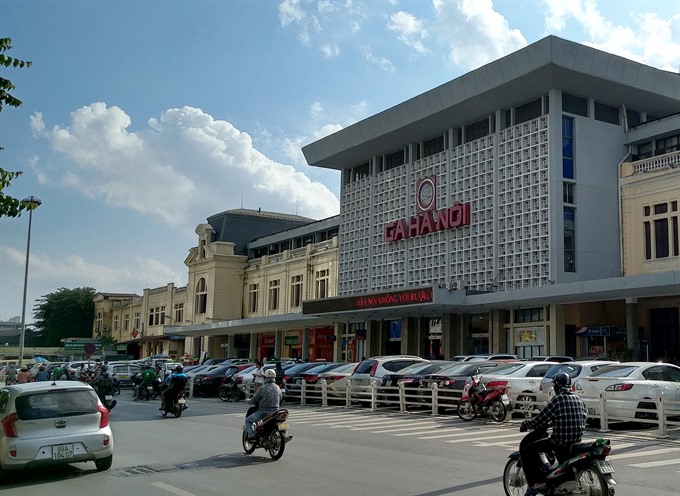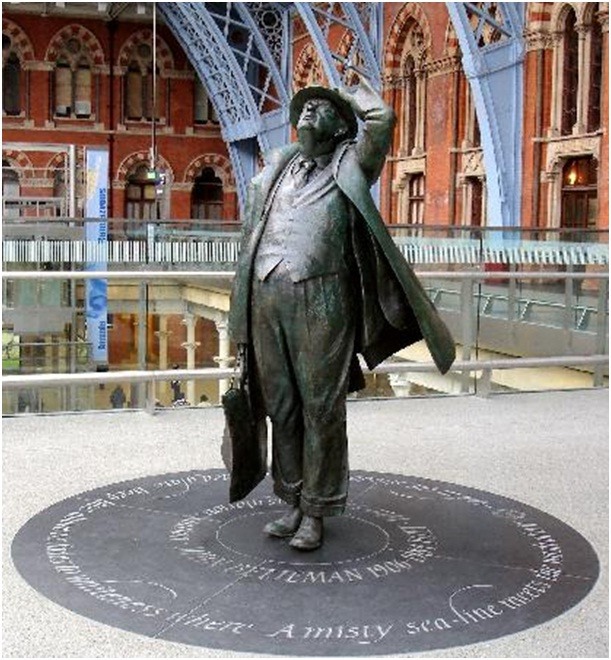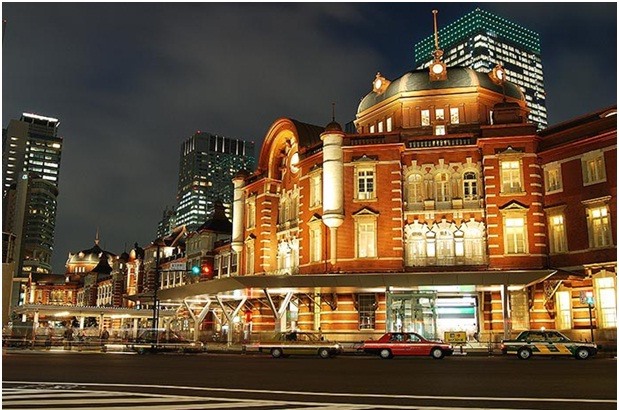 Features
Features

Grand train stations, often built in the elegant Beaux Arts architectural style, are a common feature of city centres in most capitals of the world. It may seem surprising that these vestiges of the first industrial revolution are still in operation. In fact, many are bustling with activity! And there are good economic reasons for this.
 |
| Oldest: Hà Nội railway station is the oldest railway station in Việt Nam with more than 100 years of history. VNS Photo Đoàn Tùng |
by Martin Rama*
Grand train stations, often built in the elegant Beaux Arts architectural style, are a common feature of city centres in most capitals of the world. It may seem surprising that these vestiges of the first industrial revolutionare still in operation. In fact, they are more than just in operation: they are bustling with activity! And there are good economic reasons for this.
The physical centrality of old train stations should not come as a surprise. Most train networks where built in the late 19th century (hence the Beaux Arts style), at a time when urbanisation was still under way. Since then cities have expanded considerably, and train stations just remained in the middle. London is three times bigger now than it was in 1860, and Paris five times bigger.
Urban expansion was even more dramatic in Hà Nội. Ga Hà Nội (Hà Nội railway station), inaugurated in 1902 as part of an ambitious project to connect the riches of Kunming [southern China] to the port of Hải Phòng via Long Biên Bridge, then the fourth longest bridge in the world, was the central piece of this engineering accomplishment. Three decades later, when the train network of Việt Nam was in full operation, Hà Nội had 130,000 inhabitants. Today its population exceeds 7.6 million. That is 50 times bigger!
 |
| In London: John Bentjaman Statue the central Saint Pancras Station in London. Photo courtesy of Martin Rama |
As for old train stations still thriving nowadays, the explanation holds in one word: congestion. Cities are productive because of what economists call agglomeration effects. Cities bring people closer together supporting “thicker” markets, greater specialisation in production, and a more vibrant exchange of ideas. The flip side is having so many people living side by side. Large resources need to be devoted to building and maintaining transportation networks. Millions of productive hours are lost to commuting every day.
Trains of all sorts (including metros and tramways) are arguably the most effective way to beat congestion. They carry many more people than buses, their average speed is faster, and they do not crowd street space. By contrast, private transportation, and especially cars, create huge negative effects (externalities in the jargon of economists). They require large spending on road maintenance, and the more cars there are, the more slowly everybody moves.
Here is where the physical centrality of these old train stations comes in handy. Huge numbers of people can reach city centres without getting stuck in traffic and without slowing down others along the way. The benefits are amplified when these old train stations become the nodes of a multi-modal transport network. These days, almost every grand Beaux Arts train station in a major capital city has a modern metro station built underground.
 |
| Century old: The central Tokyo Station, hub of the Shinkansen high-speed train, was inaugurated in 1914. Photo courtesy of Martin Rama |
If anything, high-speed trains have amplified the benefits from central old train stations, transforming these vestiges of the first industrial revolution into 21st century hubs. Travelling from Paris to London by plane requires going to the airport, clearing security, waiting for the boarding, flying, recovering the luggage and finally going to the city. That may easily waste twice the time it takes to the high-speed train to connect the two city centres. In a not-so-distant future it could be the same when travelling from Hà Nội to Đà Nẵng.
These grand train stations are an important economic asset in other ways. We love cities not just when they are vibrant and productive, but also when they are livable and attractive. Real estate in a city with architectural character is much more expensive than in a city without style. Architectural landmarks create economic value just by being there.
Grand old train stations have at time been described as the cathedrals of the 19th century. The Beaux Arts buildings are often architectural jewels. Their iron structures have an elegance reminiscent of the Eiffel Tower… or the Long Biên Bridge.
A traveller going from Paris to London by high-speed train arrives at Saint Pancras Station. Built in the Victorian architectural style, this magnificent brick building was inaugurated in 1868. At the time, it was the largest single-span structure in the world. But by the 1960s, following the nationalisation of railways, passenger traffic by train was in decline, and the station started to be seen as redundant. A plan waseven prepared for its demolition.
The successful campaign for its preservation was led by a poet, John Betjeman. He was a passionate defender of Victorian architecture who began his career as a journalist and ended it as one of the most popular British literary laureates. Today, the Saint Pancras building is seen with pride by Londoners. Upon arrival an attentive traveller will notice a statue of John Betjeman, raised in his honour after the station became the London hub for high-speed trains. Proof perhaps that it takes passionate poets to deliver sound economics!
(This article was written in a personal capacity, as someone who loves Hà Nội, and not as an official of the World Bank). VNS
*Martin Rama is the Chief Economist for the South Asia region of the World Bank, based in Delhi. Before that he was the Director of the World Development Report (WDR) 2013, on Jobs. Previously, for eight years, he was the Lead Economist for Việt Nam, based in Hà Nội. Prior to moving to operations, he spent ten years with the research department of the World Bank. Rama gained his degree in economics from the Universidad de la República (Uruguay) in 1981 and his PhD in macro-economics from the Université de Paris I (France) in 1985. Back to his home country, Uruguay, he worked in CINVE, the country’s largest think tank. In parallel with his World Bank duties, he was visiting professor at the graduate programme in development economics at the Université de Paris I until 2005.
In 2014, Martín Rama’s Hanoi book, Hanoi Promenade (Hà Nội Một Chốn Rong Chơi), won the Bùi Xuân Phái Prize – For the Love of Hà Nội, organised by the Vietnam News Agency’s Sports & Culture newspaper.




